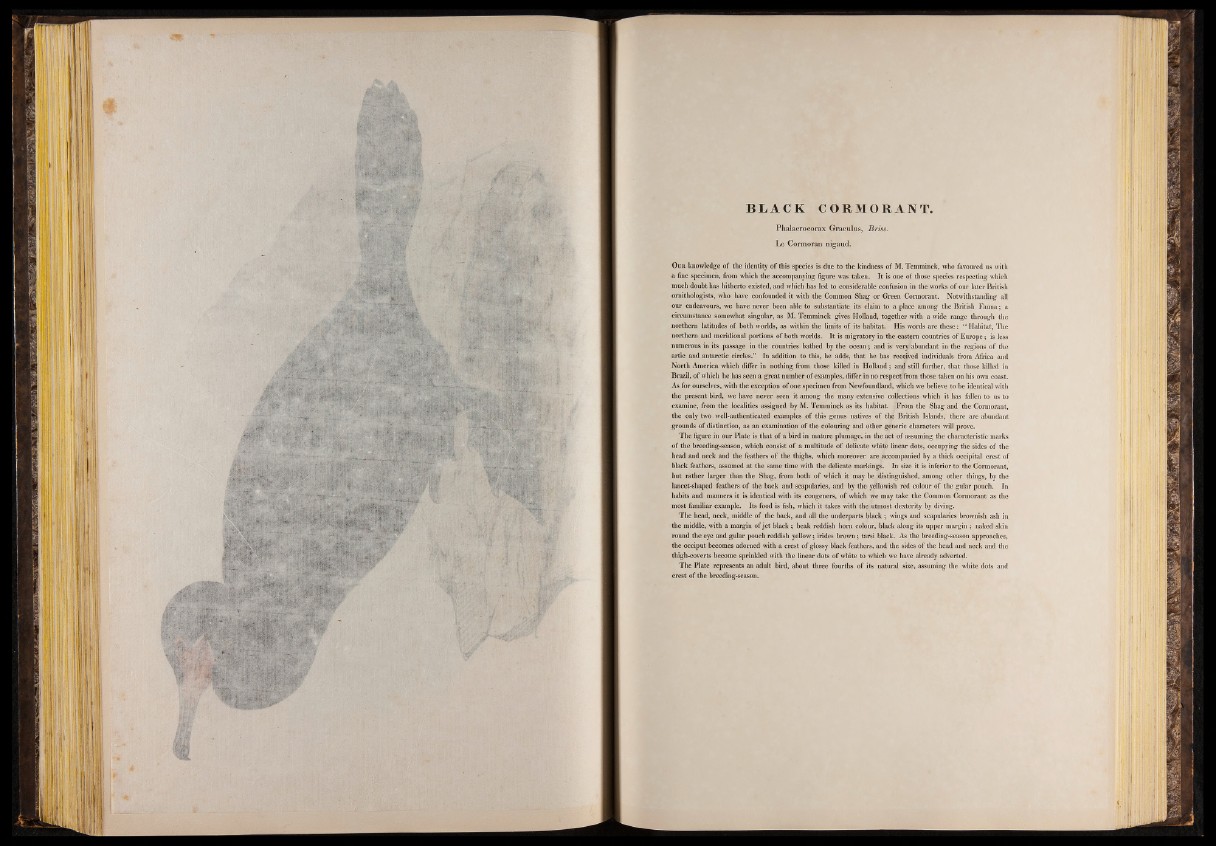
B L A CK CORMORANT.
Phalacrocorax Graculus, Briss.
Le Cormoran nigaud.
Our knowledge of the identity of this species is due to the kindness of M. Tcnuninck, who favoured us with
a fine specimen, from which the accompanying figure was taken. It is one of those species respecting which
much doubt has hitherto existed, and which has led to considerable confusion in the works of our later British
ornithologists, who have confounded it with the Common Shag or Green Cormorant. Notwithstanding all
our endeavours, we have never been able to substantiate its claim to a place among the British Fauna; a
circumstance somewhat singular, as M. Temminck gives Holland, together with a wide range through the
northern latitudes of both worlds, as within the limits of its habitat. His words are these: “ Habitat, The
northern and meridional portions of both worlds. It is migratory in the eastern countries of Europe; is less
numerous in its passage in the countries bathed by the ocean; and is veryfabundant in the regions of the
artic and antarctic circles.” In addition to this, he adds, that he has received individuals from Africa and
North America which differ in nothing from those killed in Holland; and still further, that those killed in
Brazil, of which he has seen a great number of examples, differ in no respect from those taken on his own coast.
As for ourselves, with the exception of one specimen from Newfoundland, which we believe to be identical with
the present bird, we have never seen it among the many extensive collections which it has fallen to us to
examine, from the localities assigned by M. Temminck as its habitat. From the Shag and the Cormorant,
the only two well-authenticated examples of this genus natives of the British Islands, there are abundant
grounds of distinction, as an examination of the colouring and other generic characters will prove.
The figure in our Plate is that of a bird in mature plumage, in the act of assuming the characteristic marks
of the breeding-season, which consist of a multitude of delicate white linear dots, occupying the sides of the
head and neck and the feathers of the thighs, which moreover are accompanied by a thick occipital crest of
black feathers, assumed at the same time with the delicate markings. In size it is inferior to the Cormorant,
but rather larger than the Shag, from both of which it may be distinguished, among other things, by the
lancet-shaped feathers of the back and scapularies, and by the yellowish red colour of the gular pouch. In
habits and manners it is identical with its congeners, of which we may take the Common Cormorant as the
most familiar example. Its food is fish, which it takes with the utmost dexterity by diving.
The head, neck, middle of the back, and all the underparts black ; wings and scapularies brownish ash in
the middle, with a margin of jet black ; beak reddish horn colour, black along its upper margin ; naked skin
round the eye and gular pouch reddish yellow; irides brown; tarsi black. As the breeding-season approaches,
the occiput becomes adorned with a crest of glossy black feathers, and the sides of the head and neck and the
thigh-coverts become sprinkled with the linear dots of white to which we have already adverted.
The Plate represents an adult bird, about three fourths of its natural size, assuming the white dots and
crest of the breeding-season.